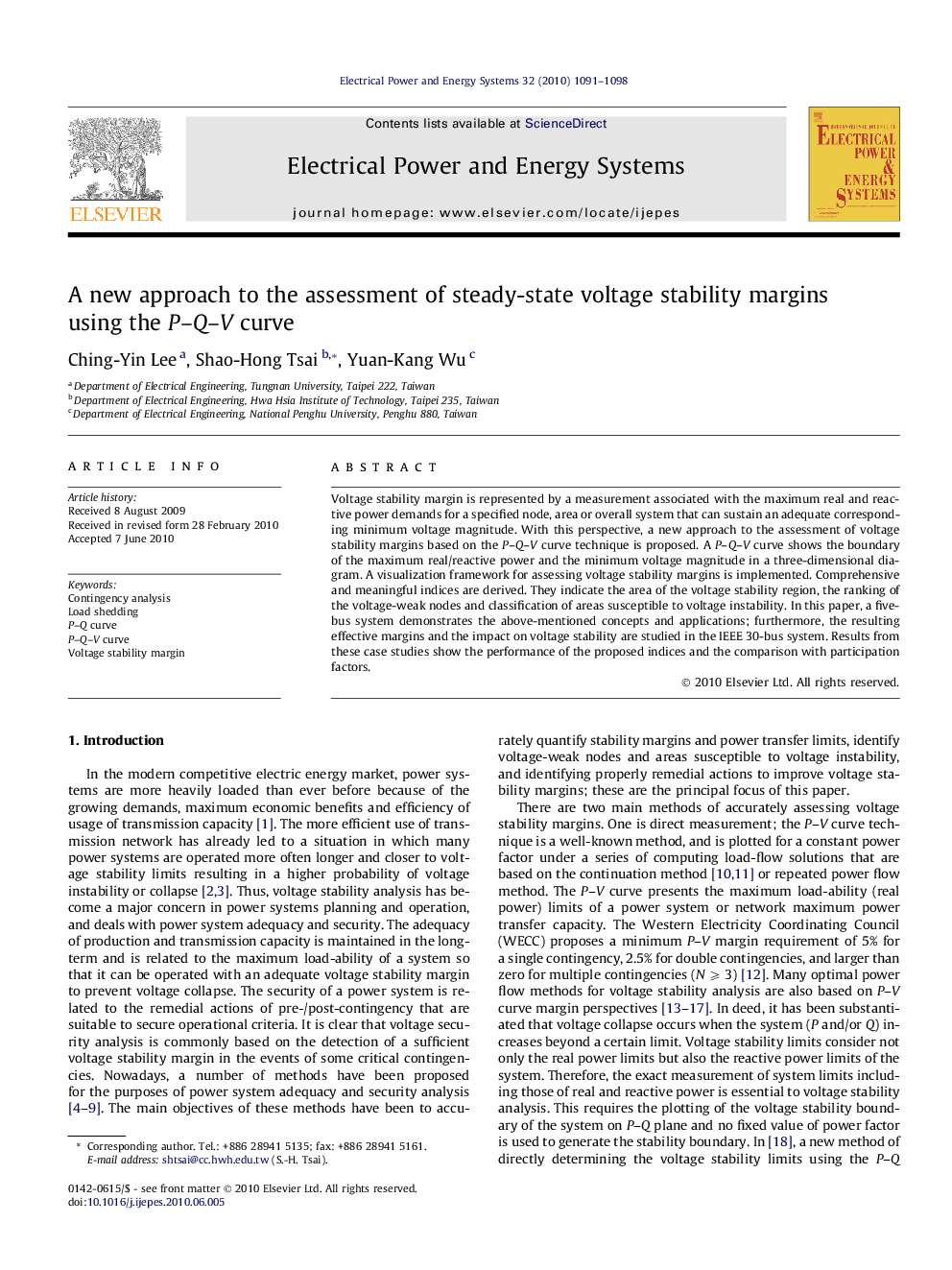| Article ID | Journal | Published Year | Pages | File Type |
|---|---|---|---|---|
| 400145 | International Journal of Electrical Power & Energy Systems | 2010 | 8 Pages |
Voltage stability margin is represented by a measurement associated with the maximum real and reactive power demands for a specified node, area or overall system that can sustain an adequate corresponding minimum voltage magnitude. With this perspective, a new approach to the assessment of voltage stability margins based on the P–Q–V curve technique is proposed. A P–Q–V curve shows the boundary of the maximum real/reactive power and the minimum voltage magnitude in a three-dimensional diagram. A visualization framework for assessing voltage stability margins is implemented. Comprehensive and meaningful indices are derived. They indicate the area of the voltage stability region, the ranking of the voltage-weak nodes and classification of areas susceptible to voltage instability. In this paper, a five-bus system demonstrates the above-mentioned concepts and applications; furthermore, the resulting effective margins and the impact on voltage stability are studied in the IEEE 30-bus system. Results from these case studies show the performance of the proposed indices and the comparison with participation factors.
